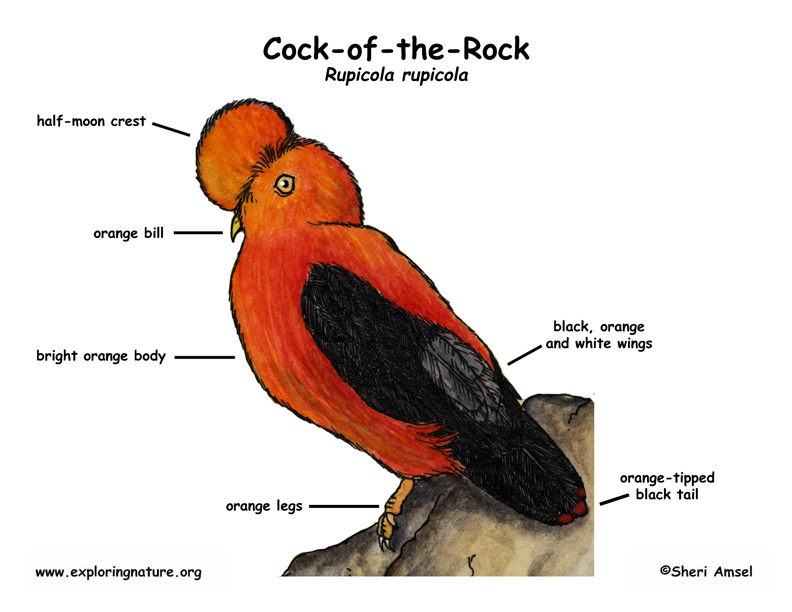

They are found in South America in French Guiana, Suriname, Guyana, southern Venezuela, eastern Colombia and northern Brazil.
They like to perch on rocky outcroppings (hence the name) in tropical forests.
They are a bright orange bird with a large, fanned head crest and orange beak and legs. They have a black tail with orange tips and their wings are black, white and orange. They are sturdy birds reaching about a foot tall (30 cm). Females are duller in color but larger than the males.
The males – sometimes as many as 40 in one place – will display their head crest from on a cleared area of ground, called a lek, to attract females. They fly back and forth from low lying branches to the ground to mate with as many females as possible (polygamous).
They eat fruit.
Females make a nest of grass and mud and attach it to a rocky outcropping off the ground using their own saliva. They then lay 1-2 eggs and warm them (incubate) for almost a month. Males do not help with nesting or care of chicks.
Unknown status.
Kingdom: Animalia
Phylum: Chordata
Class: Aves
Order: Passeriformes
Family: Cotingidae
Genus: Rupicola
Species: R. rupicola
When you research information you must cite the reference. Citing for websites is different from citing from books, magazines and periodicals. The style of citing shown here is from the MLA Style Citations (Modern Language Association).
When citing a WEBSITE the general format is as follows.
Author Last Name, First Name(s). "Title: Subtitle of Part of Web Page, if appropriate." Title: Subtitle: Section of Page if appropriate. Sponsoring/Publishing Agency, If Given. Additional significant descriptive information. Date of Electronic Publication or other Date, such as Last Updated. Day Month Year of access < URL >.
Amsel, Sheri. "Cock-of-the-Rock" Exploring Nature Educational Resource ©2005-2024. December 13, 2024
< http://www.exploringnature.org/db/view/Cock-of-the-Rock >

